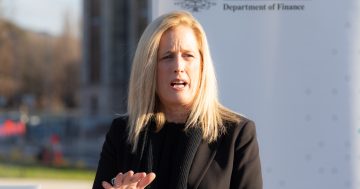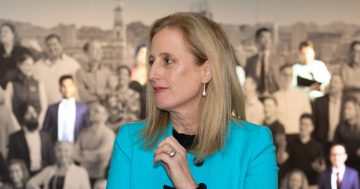
Research shows an increasing public acceptance of the digital revolution among global populations, but Arnauld Bertrand and Julie McQueen say there are still significant issues that Governments must address.
Governments are striving to use digital technology to improve policy-making, interact better with citizens, increase capacity and efficiency and, ultimately, achieve better outcomes.
However, this can only succeed if public sector Agencies truly understand what citizens are looking for, so they can engage with them to meet their needs and win their trust.
Which is why, in 2021, EY embarked on a global research program, Connected Citizens, to understand how people feel about the technological advances shaping their lives.
Together with leading market research agency, Ipsos, EY teams surveyed 19,000 people across 19 countries, representing all segments of society.
The study looked at how citizens access and use technology, their attitudes toward data privacy and sharing, their views on public services, and their expectations for a future digital relationship with Government.
A key output of the research was a model identifying seven personas representing demographic and psychographic groups. These were:
Diligent Strivers: Young, urban-dwelling self-improvers keen to get on in life.
Capable Achievers: Pragmatic embracers of digital innovation.
Aspirational Technophiles: Well-educated digital natives excited by technology.
Privacy Defenders: Cautious about sharing their data.
Tech Sceptics: Older, lower-income earners who struggle to see the benefits of technology.
Struggling Providers: Lower-paid workers who lack the skills or means to access digital services.
Passive Outsiders: Detached from the connected world and reluctant to embrace change.
Through workshops run in Australia, Brazil, India, the United Kingdom and the United States, citizens talked about the digital divide, digital IDs, the importance of proactive public services, the dangers of AI and 5G, and their ideal digital experience.
Participants were recruited to reflect the seven personas, as well as a spread of demographic and income factors.
Citizens remain enthusiastic about the potential of digital Government, but there were concerns.
Continued inequality of access: Older people, and those with lower income or education levels, are among those most likely to be unable or unwilling to keep up.
An Australian participant who represents the Tech Sceptic persona, said he was worried about his father “what he’s going to do to try and keep up … how do you try and teach someone who can’t be taught?”
Data privacy and security concerns: Faced with high-profile stories about data leaks and cyber-crime, and Governments’ patchy record of dealing with them, people are anxious about the security of their personal and financial data.
A UK participant from the Privacy Defender segment said: “It seems very one-sided.
“I can see the benefits to a Government body and private industry having all this information. The benefits to us, as individuals, are unclear.”
Keeping AI on a leash: As the use of AI accelerates, the citizens taking part in the research recognise its benefits — such as fast, accurate decision-making and more proactive service delivery.
Others felt that AI usage could spiral out of control, bringing unintended consequences.
A Privacy Defender said: “We’ve had lots of issues where there’s racial profiling with biometrics.
“I don’t think that’s a problem with AI; I think that’s a problem with our sophistication and our understanding of ourselves and the way we learn, which we need to master before it should be implemented into systems that can control our lives.”
Citizens clearly envision a digital future and don’t want to get left behind.
Yet they want to adapt at their own pace, rather than being forced to use digital services imposed by Government.
Even an Aspirational Technophile from the US sees problems.
“There are a lot who will not use this … they don’t want to be forced into doing something.”
EY teams identified a series of priority actions for Governments to meet these goals.
Integrate service delivery: Governments can break down institutional barriers to collaboration and build joined-up services centred on individuals’ needs.
This requires a shared vision for whole-of-Government transformation, with jointly agreed goals, incentives to work together more closely — such as shared funding and targets.
Eliminate siloed IT: Like most large organisations, Governments have disparate systems, which need to be brought together to create a common platform for linking data.
Breaking down legal and cultural barriers, and upgrading systems to improve interoperability, calls for strong political will and leadership, as well as funding support.
Design services around the end user: Rather than organising around their own internal structures, Governments should encourage Public Agencies to look outward to citizens and their needs.
Human-centred design places citizens at the centre of service development and delivery, constructing services around individuals’ life events and personal circumstances.
Technologies such as AI, automation and data analytics can track the needs of individuals and the wider population to ensure services are matched to these needs.
Build confidence in sharing data: To address public concerns, Governments can promote the benefits of data sharing while demonstrating the highest standards of security and privacy.
Governments and Agencies should enforce governance and standards, with a consistent national regulatory framework and a central Regulatory Agency.
Foster strong digital leadership and skills: Government workforces need the right leadership, skills and resources to deliver a 21st century customer experience.
This requires a new breed of digital leaders who understand the potential of technology and data — and are not afraid to challenge the status quo.
They should champion experimentation and bring it to scale, helping their teams to adopt new technology that makes their jobs easier and improves citizens’ lives.
Deliver equitable digitalised services for all: Multi-channel services should be maintained while work is done to close the digital divide.
This means addressing lack of digital access and affordability, and tackling low levels of digital literacy and motivation.
*Arnauld Bertrand leads EY Global Government and Infrastructure Consulting Services. Julie McQueen is the Lead Analyst in the EY Global Government and Infrastructure team.
A fuller version of this article first appeared at the Forbes.com website.











